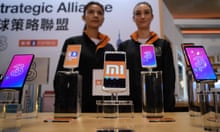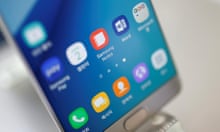There’s a war going on behind closed doors for control of your smartphone. It’s between the phone makers and the operators, but it’s not over privacy or data or cost – it’s over you.
The battles are raging over who owns the consumer and your phone: is it the buyer or the manufacturer? And is the smartphone a device you purchase, or a service you pay for monthly?
The boom years for the industry, when a smartphone was a user’s first, are long gone in developed nations with most smartphones now sold to people who already have one. In the US and UK market penetration has hit roughly 85%. This means the growth a phone maker needs each year can only come at the expense of a competitor. And that has changed how the manufacturers see the market.
Marina Koytcheva, director of forecasting at CCS Insight says: “After years of analysts and commentators talking about mobile phone market peaking within the visible horizon, it has now reached that point.”
The research firm expects total mobile phone sales to decline by 1.3% this year over last, with smartphones accounting for almost three-quarters of the market and up only 4.1% globally.
At the same time smartphone innovation has largely stagnated and users are holding on to their devices longer.
Francisco Jeronimo, IDC’s research director for European mobile devices, says: “No one gets as excited about the latest phone any more as they used to get in the past three to four years. It’s more of the same. They all look the same, they have similar screen sizes, cameras, etc etc.”
Fewer purchases mean the big smartphone players are now under pressure to extract more revenue from their existing user base, which is easier for Apple and its App Store than others reliant on Google’s Play Store, and to try to convince users that life is greener on their side of the smartphone divide.
In the UK, Samsung and Apple have been fighting over the so-called floating voter - the 20% of smartphones buyers that switch platforms. That 20% churn is a missed opportunity for each manufacturer, prompting them to look at ways to lock customers in.
At the same time, the mobile phone operators are in a similar competition. Switching between the major phone networks has always been an issue, whether it’s over price, customer service or the latest handset.
To combat churn, O2 launched its Refresh plans in 2013, which essentially decoupled the fees users paid for network operator services – the minutes, text messages and data – from the fees users pay for the smartphone. In 2015 it launched a modified version for yearly upgrades.
The marketing and consumer director for O2, Nina Bibby, says: “O2 Refresh provides transparency and flexibility for the customer - once they’ve paid off their smartphone their bill automatically drops. Because it offers real benefits we’re seeing lower churn.”
Apple followed suit, launching its iPhone upgrade programme in the US last year and the UK this year. Samsung too, launched an upgrade programme this year in the UK. In both schemes, customers pay a monthly fee and get a new phone every year or two.
Jeronimo says: “If phone makers manage to convince people that the phone is a service, paying an instalment every month and getting a new phone 12 months later, it will change the current trend and convince people to upgrade more often. And it will keep them using the same brand.”
Manufacturers attempting to push their own upgrade programmes - the phone as a service - are seeing pushback from operators, which do not want to relinquish control of the end user.
Jeronimo says: “People will realise that it’s better to pay £40-50 to Apple and get a new phone every 12 months than, say, pay £40 to the mobile operator and be locked for 24 months to them. But mobile operators are still the dominant channel in most countries in Europe, so it will take time.”
For O2, the best known instigators of the new instalment trend, its unique selling point is the flexibility to switch handset makers.
Bibby says: “Imitation is the sincerest form of flattery. Flexibility like this is just the next stage of innovation so we’re not surprised to see others adopting it. Manufacturers are trying to ensure that more of their own handsets are sold in the market. They’re trying to clearly compete with each other.”
For now, the battle for control of the phone in your hand is happening behind closed doors. Soon we’ll begin to see the phone-as-a-service idea pushed by one of the big manufacturers, but only once the operators are no longer crucial to sales.
Jeronimo says: “People are getting more used to the idea of a phone as a service, but no one has been promoting the phone as a service yet, it’s all been about upgrading thus far. Once a phone manufacturer comes and says we’ll sell you a service not a device from now on, I think we’ll see a big uptake.”








